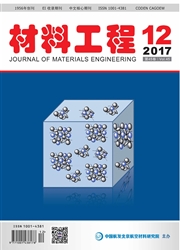

 中文摘要:
中文摘要:
为了研究焊管液压胀形过程的变形行为,在管材胀形性能测试系统上进行了不同长径比条件下低碳钢(STKM11A)薄壁焊管的胀形实验,获得了焊管的壁厚分布规律、胀形区轮廓形状、极限膨胀率和应变分布规律。结果表明:管材焊缝区的减薄率仅为2.4%-5.5%,等效应变仅为0.05-0.10,变形程度相对母材区较小,主要发生几何位置移动。环向壁厚的最薄点位于以焊缝为中心的对称两侧士30°位置处。随着胀形区长度增大,管材破裂压力、减薄量、极限膨胀率均发生减小,胀形区轮廓逐渐偏离椭圆形,当长径比达到2.0时,已不再适合用椭圆函数描述。此外,胀形区长度增大过程中,管材从双拉向平面应变状态发生转变,在此基础上建立了焊管的成形极限图。
 英文摘要:
英文摘要:
In order to investigate the deformation behaviour of welded tubes during hydraulic bulging process, the hydraulic bulging tests of thin-walled welded low carbon steel tubes (STKM11A) were conducted on the tube hydroformability testing unit. The thickness distribution, profiles of bulging area and the strain distribu-tion were all obtained. Results show that the thickness reduction of weld zone is just 2.4 : %-5.5% while its effective strain is just 0. 05-0. 10, which is very small and negligible compared with the parent material and means that just the geometric position of weld zone is changed with the continuous bulging. The thinnest points are located on the both sides of weld seam symmetrically and the angle between the thinnest point and weld seam is about 30°, at which the necking has been occurred. When the length of bulging area increases, the fracture pressure, the thickness reduction and the ultimate expansion ratio all decrease, and the profile of the bulging area gradually steps away from the elliptical model which is powerless for the ratio of length to di-ameter up to 2. 0. Moreover, the strain state of the tube is transformed from biaxial tension to plane strain state with the increasing length of bulging area, on the basis of this the forming limit diagram of welded STKM11A steel tubes can be established.
 同期刊论文项目
同期刊论文项目
 同项目期刊论文
同项目期刊论文
 Mechanical properties and formability of TA2 extruded tube for hot metal gas forming at elevated tem
Mechanical properties and formability of TA2 extruded tube for hot metal gas forming at elevated tem Formability and microstructural stability of friction stir welded Al alloy tube during subsequent sp
Formability and microstructural stability of friction stir welded Al alloy tube during subsequent sp 期刊信息
期刊信息
